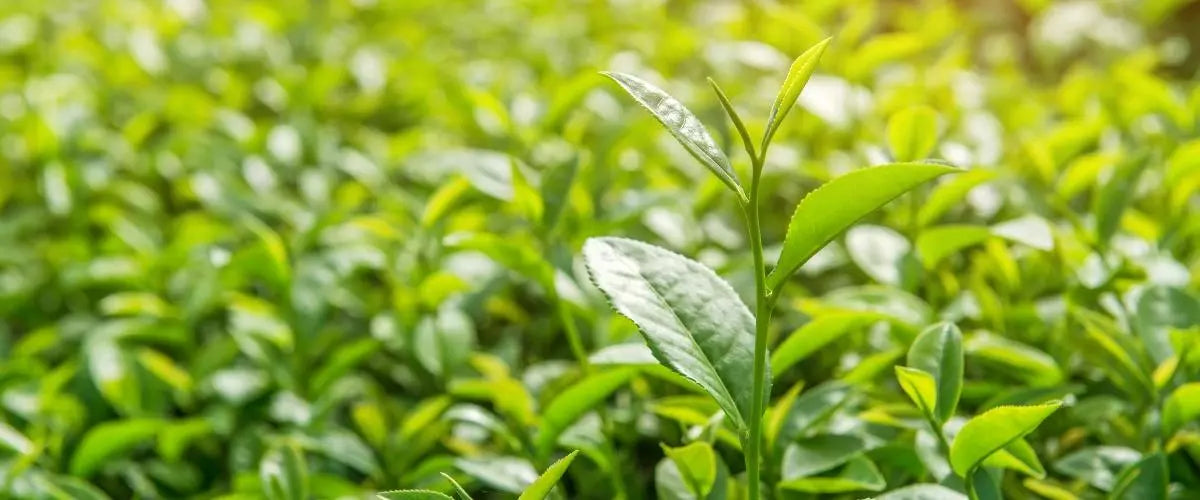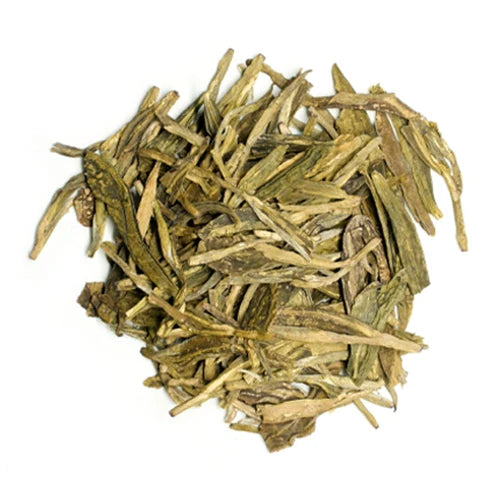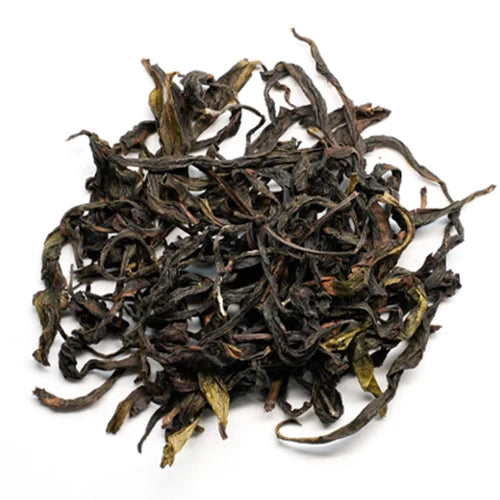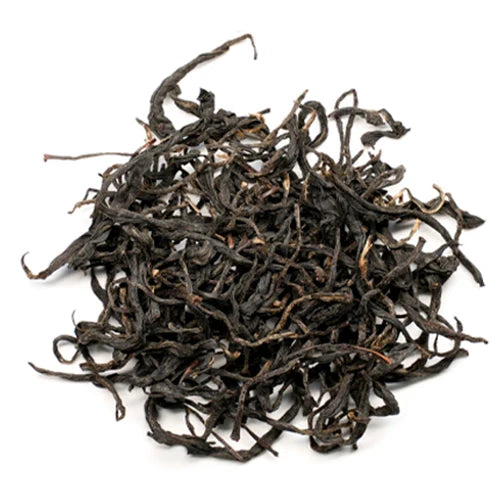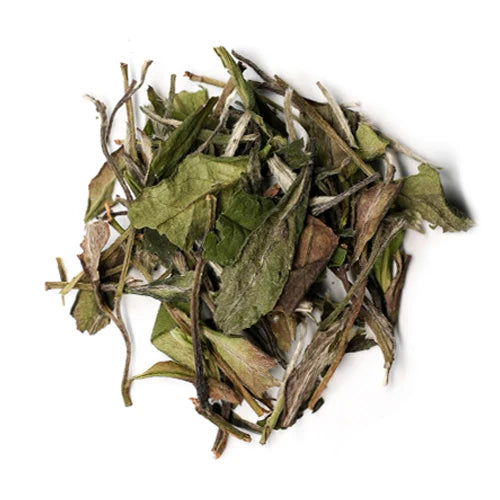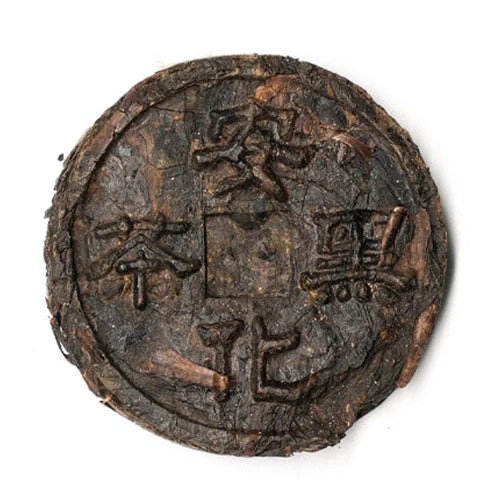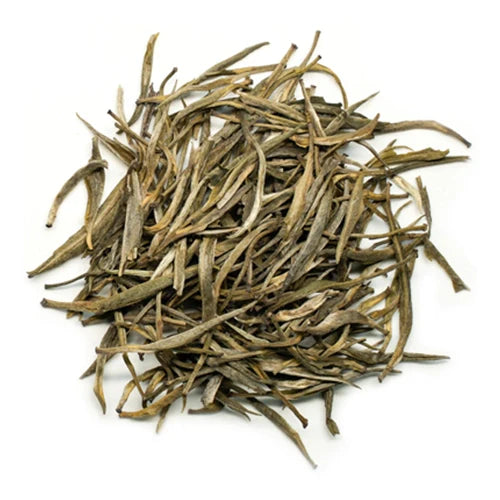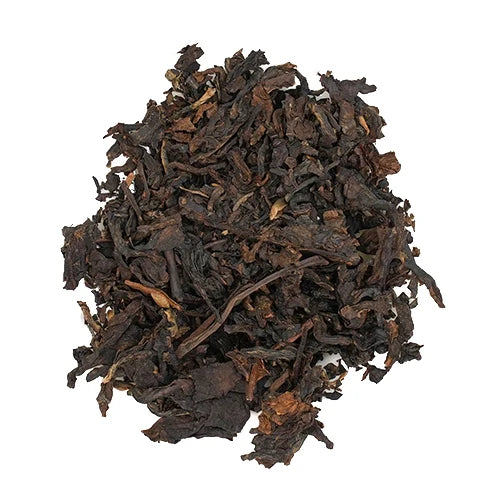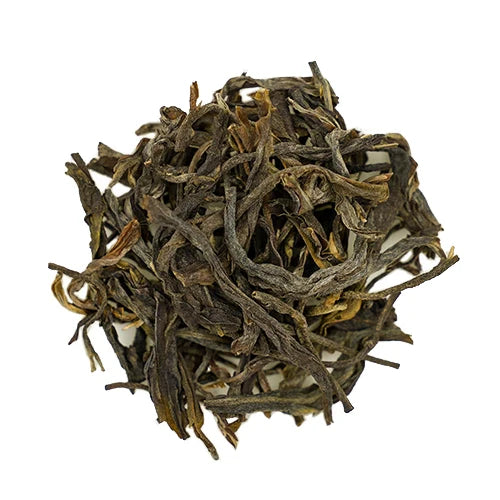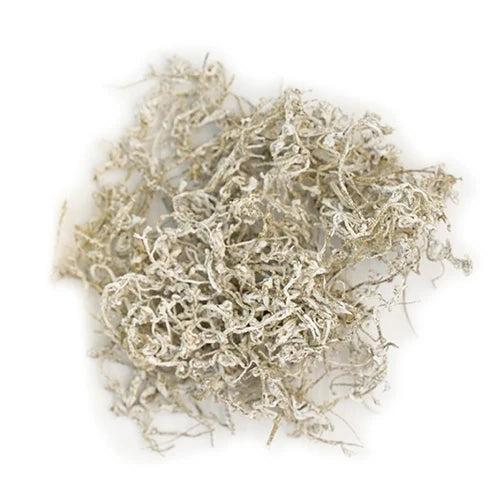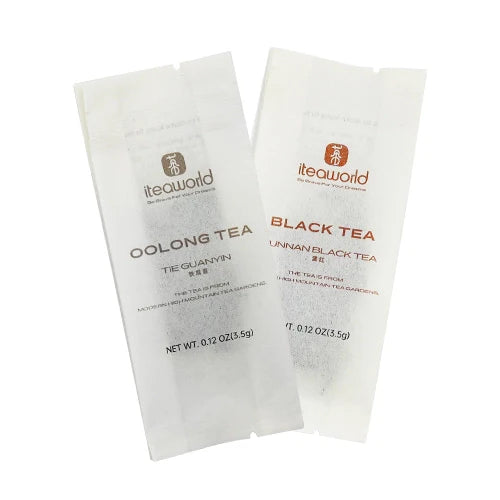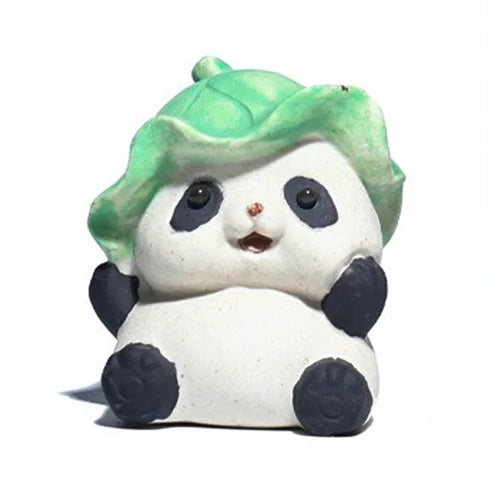1,The Unique Flavor Profiles of Black Teas from China, Ceylon, Assam, and Japan
Black teas from varying regions—China, Ceylon (Sri Lanka), India, and Japan—each flaunt distinctive flavor profiles. Similar to wines, the same tea plant varieties can yield different flavors depending on the soil conditions and processing techniques used.
Ceylon Black Tea: Crafted from the Assam tea plant variety, Ceylon black tea is highly fermented and commonly processed using the CTC method, resulting in broken leaves. Cultivated at different altitudes, the higher the elevation, the superior the tea quality. Renowned for its robust flavor, Ceylon black tea often exhibits notes of citrus, spice, and floral scents. Those grown at higher altitudes boast a more delicate taste with richer fruit and floral aromas, a darker tea soup color, and a slight astringency, making them ideal for pairing with milk or sugar.
Assam Black Tea: Originating from India's Assam region and sharing the same plant variety as Ceylon, the humid climate of the region imparts a unique, strong malt aroma and sweetness to the Assam black tea. Highly fermented, it is typically processed into broken leaves and is well-suited for consumption with milk and sugar.
Chinese Black Tea: China offers a diverse array of black tea types, processed in various methods. Key production areas include Fujian (such as Lapsang Souchong, Jin Jun Mei), Anhui (such as Keemun Black Tea), and Yunnan (such as Yunnan Black Tea). Chinese black tea production often emphasizes craftsmanship, preserving the integrity of the tea leaves to provide a distinctive regional flavor. The flavors range widely, from the ultra-sweet, malty taste of Yunnan Gold Tea to the chocolate flavor of Keemun Black Tea that needs no sugar, to the rich Jin Jun Mei, and the sweet, woody Sichuan black tea. The tea soup color varies from light orange to deep red, with a range of aromas and tastes from soft to rich.
Chinese Loose Leaf Black Teas are better suited for pure drinking to fully appreciate their complex aromas and flavor profiles. For instance, Yunnan black teas are sweeter, lighter, and more aromatic than Assam black teas, while Chinese black teas are smoother and sweeter than Ceylon black teas.
Japanese Black Tea: Relatively rare and mainly produced in Shizuoka and Kagoshima. Japanese black tea is typically made from varieties used for green tea that undergo a fermentation process and often specially processed, such as roasted, appealing to those who prefer a delicate and light tea taste.
If you’ve ever wanted to explore the world of Chinese black tea, now is the perfect time to start.This Black Friday, iTeaworld invites you to celebrate authentic Chinese loose leaf tea with 25% off all teas, 50% off green teas, and exclusive free gifts (Nov 3–Dec 1).Whether you’re discovering Lapsang Souchong’s smoky depth, Keemun’s chocolatey aroma, or Yunnan black tea’s golden sweetness, it’s your chance to taste the craftsmanship of real Chinese tea—fresh, smooth, and unforgettable.
2,Main Types of Chinese Black Tea: Souchong vs. Gongfu
Chinese black teas are primarily divided into two types based on processing differences: Souchong and Gongfu.
Souchong Black Tea, mainly produced in Fujian, is the world's earliest black tea with a unique smoking process. Nowadays, there are also non-smoked Souchong black teas, which have changed the original smoking process to charcoal baking and drying.
Wanna try out the difference between the smoky and non-smoky Lapsang Souchong with our Black Tea Sampler?
Gongfu Black Teahas evolved from the Souchong black tea process, characterized by more refined craftsmanship that requires considerable effort, hence the name Gongfu. Gongfu black teas are found in various regions across the country, each with its own distinct flavor and taste profile.
3,Spring vs. Autumn Harvest for Chinese Black Tea
Spring black tea is harvested and produced between March and May each year. After a winter dormancy, the tea leaves grow slowly, enriching their intrinsic quality, making them typically more tender and fresh. Many in China prefer the refreshing taste, and spring black tea is often of superior quality, with relatively higher prices.
Autumn black tea is usually harvested and produced between September and November. Picked after summer, as the autumn climate gradually cools and the diurnal temperature variation increases, it helps accumulate the tea's aroma. The tea leaves are more mature, with a relatively richer and mellow taste, and the price may be more affordable.
4,When Does Chinese Black Tea Typically Hit the Market?
Chinese spring black tea typically becomes available in the market between April and May. The specific timing varies depending on the place of origin, altitude, and picking grade.
Lapsang Souchong: It usually hits the market around May each year.
Keemun Black Tea: Due to its complex refining process, it usually becomes available in early April.
Jin Jun Mei: The spring tea is picked around Grain Rain, which is around April 19th to 21st each year.
Yunnan Black Tea: The spring tea is generally on the market around early April, when the quality of Yunnan black tea is the best and the price is the highest.
Guangxi Black Tea: Harvested from century-old trees in Guangxi, this tea absorbs rich nutrients and minerals, giving it a sweet aroma and full-bodied flavor. As a result, Guangxi Black Tea has low bitterness and can be steeped multiple times.
5,What's the Most Common/Popular Kind of black Tea in China?
With a multitude of varieties, several types of Chinese black tea have gained high recognition in the industry, such as Keemun Black Tea, Yunnan Black Tea, Lapsang Souchong, Jin Jun Mei, and Ying Hong No.9.
Lapsang Souchong: Originating from Wuyi Mountain in Fujian Province, it is one of the earliest black teas in China, known for its unique smoky flavor derived from pine wood used in the drying process.
Keemun Black Tea: From Qimen County in Anhui Province, it is renowned for its elegant fruit and floral aromas and is known as the queen of black teas, with a bright orange-yellow soup and a delicate taste.
Yunnan Black Tea:Produced in Yunnan Province using the large-leaf Yunnan tea plant, it's one of the most cost-effective black teas in China, loved for its rich taste, sweetness, and malt aroma.
Jin Jun Mei: A high-end black tea from Wuyi Mountain in Fujian Province, famous for its golden tea hairs and rich fruit and honey fragrances.
Ying Hong No.9: A newer variety from Guangdong Province, welcomed for its bright tea soup and fresh fruit aroma.
6,Strong Black Tea Recommendations
Zhenghe Gongfu: From Zhenghe County in Fujian Province, this black tea features a rich aroma and a mellow taste. Zhenghe is also known for its famous Zhenghe white tea.
Tanyang Gongfu: Also from Fujian Province, this black tea is known for its strong aroma and rich flavor.
Yunnan Black Tea: From Yunnan Province, it's recognized for its rich taste and malt aroma.
Lapsang Souchong: Traditionally smoked, it has a distinctive smoky flavor and a full-bodied taste.
Ying Hong No.9: From Guangdong, it offers a bright tea soup and a relatively strong taste.
7,Chinese Black Tea Recommendations for Iced Tea & Cold Brew Tea
If you're open to premium loose-leaf tea without any additives and are looking for a rich, smooth, naturally sweet taste, I'd recommend Yunnan and Yingde black teas. If you're also keen on floral notes in your iced tea or Cold Brew Tea, try the traditional Chinese scented jasmine black tea and Rose Black Tea. The rose black tea, crafted using the ancient enfleurage method with four pounds of roses for every pound of tea, allows you to enjoy the rich rose fragrance without any visible petals.
8,Chinese Black Teas Similar to Hojicha
Hojicha, a Japanese green tea, is baked at high temperatures of around 200 degrees until the leaves turn brown and emit a unique aroma. Chinese black teas that also undergo high-temperature charcoal baking include:
Lapsang Souchong:Known for Wild Souchong smoky flavor, this tea offers a distinct experience that might appeal to those who enjoy the unique taste of Hojicha, even though the smoking process differs from Hojicha's baking method.
Non-smoked Lapsang Souchong: In an effort to reduce environmental impact caused by the large amount of pine wood needed for smoking, a non-smoked version has been produced. High-quality non-smoked Lapsang Souchong is dried using charcoal fire, which imparts a fragrance similar to Hojicha.
Keemun Black Tea: Some premium Keemun black teas may be enhanced with charcoal fire baking to elevate their elegant aroma and flavor profile.
9,Most Popular Black Tea Producing Areas in China
The regions for black tea production in China are widespread, each with its own characteristics and advantages. Here are some of the most popular and renowned black tea producing areas:
Wuyi Mountains in Fujian: As one of the key production areas for Chinese black tea, Wuyi Mountains are celebrated globally for their unique, rich, and aromatic rock teas.
Qimen in Anhui: Known for its rich aroma and mellow taste, Qimen black tea is acclaimed as one of the representatives of Chinese black tea.
Yunnan: Yunnan's large-leaf black tea has become a popular variety in the market, with its unique aroma and taste, mainly produced in areas like Lincang, Baoshan, and Fengqing in Yunnan Province.
Sichuan: Sichuan black tea, especially Chuan Hong from the Yibin area, is recognized for its rich taste and distinctive aroma.
Yingde in Guangdong: Yingde Black Tea is praised as the "Oriental Beauty" for its symmetrical and beautiful appearance, dark red color, bright red soup, and rich, pure aroma.
Yichang in Hubei: Yihong Gongfu tea is one of the oldest types of black tea in China, famous both domestically and internationally for its unique style and excellent quality.
Xiushui in Jiangxi: Ninghong Gongfu tea, produced in Xiushui County, Jiangxi Province, is one of the earliest Gongfu black teas in China, loved for its unique aroma and taste.
Hangzhou in Zhejiang: Jiuqu Hongmei, a famous tea from Hangzhou, Zhejiang, is a treasure among black teas, known for its distinctive plum blossom fragrance.
10.How Do Chinese People Enjoy Black Tea?
Young Chinese people generally prefer bagged loose-leaf black tea, mainly consumed in the office for its convenience and simplicity.
In Sichuan and Chongqing, people of all walks of life are accustomed to visiting teahouses to enjoy tea, where dedicated staff refill their cups in a timely manner, primarily for relaxation and social gatherings.
In the Guangdong and Fujian regions of China, it's customary to brew tea using Gaiwan, a traditional method for making Gongfu tea.
Chinese businessmen form a unique group of tea drinkers, with almost every business owner having a tea table in their office to entertain clients and engage in business discussions.

























